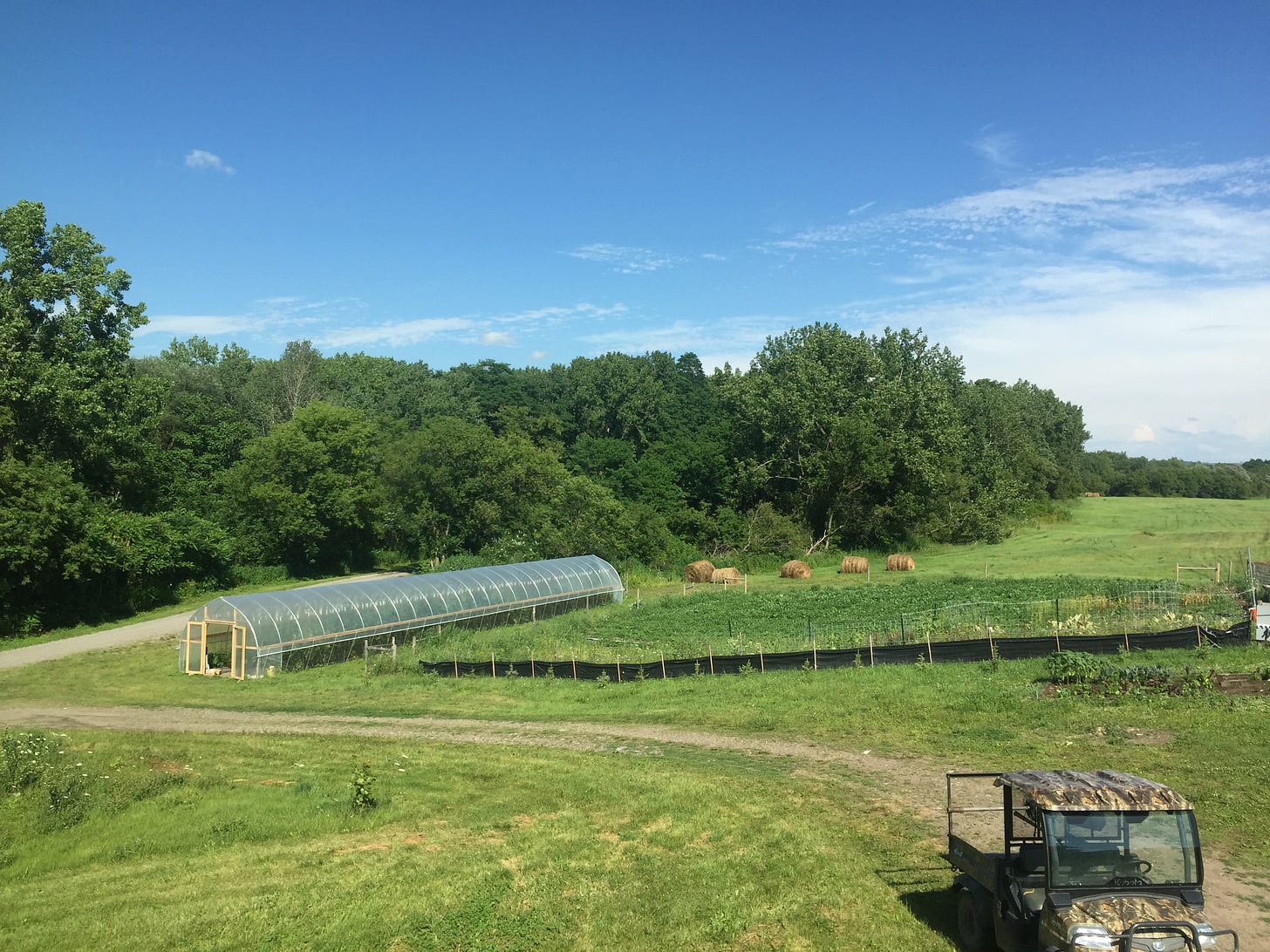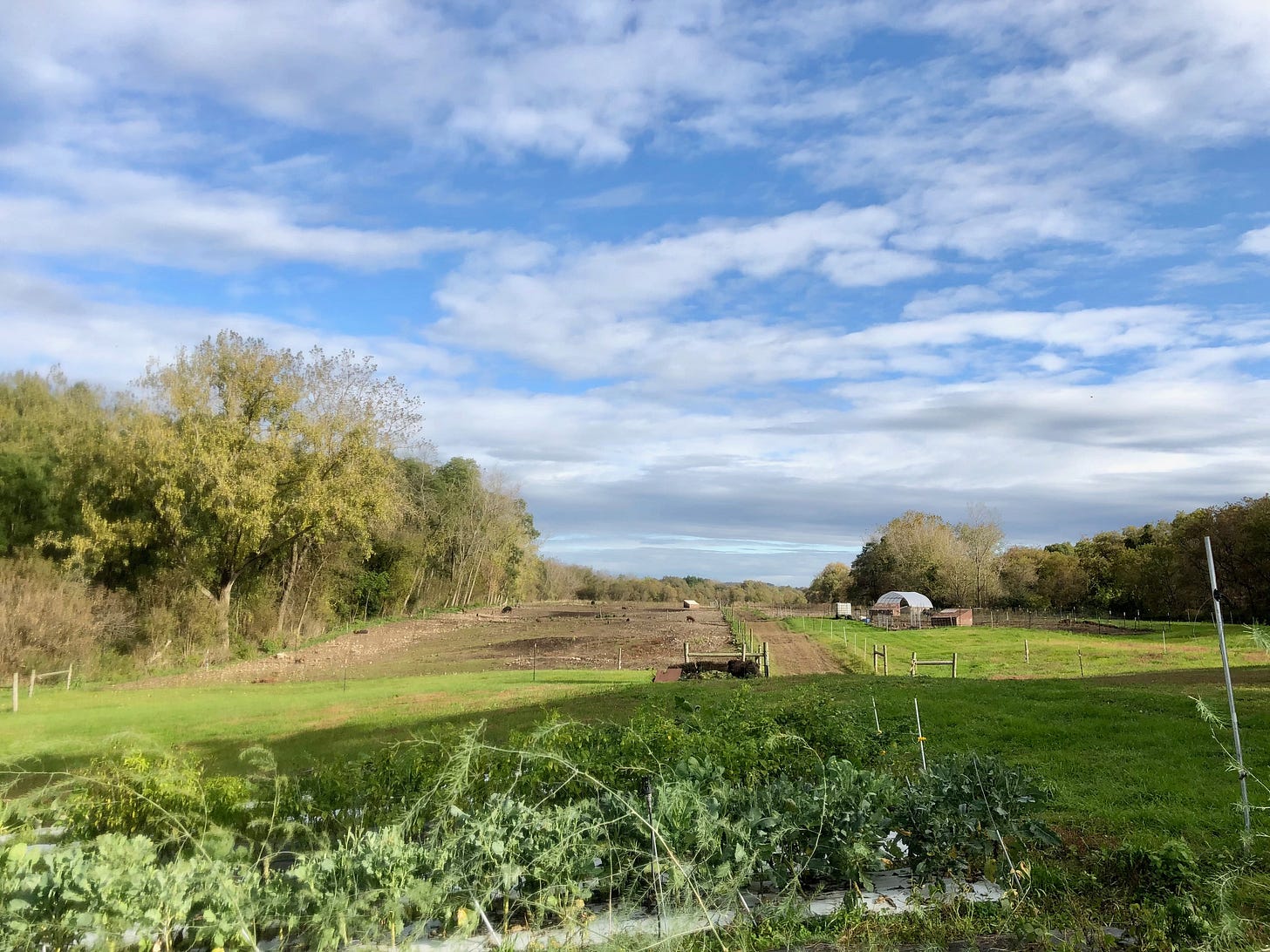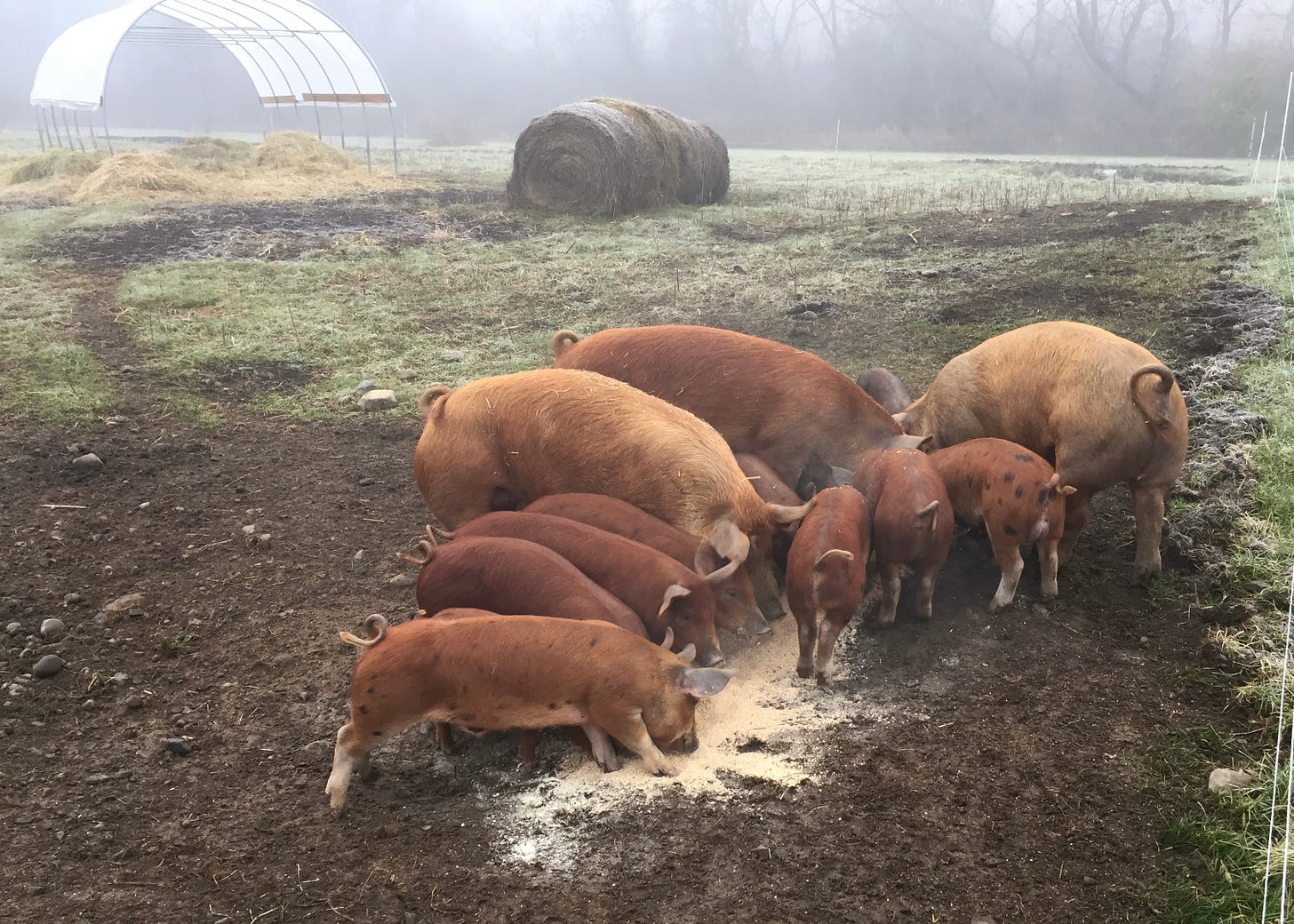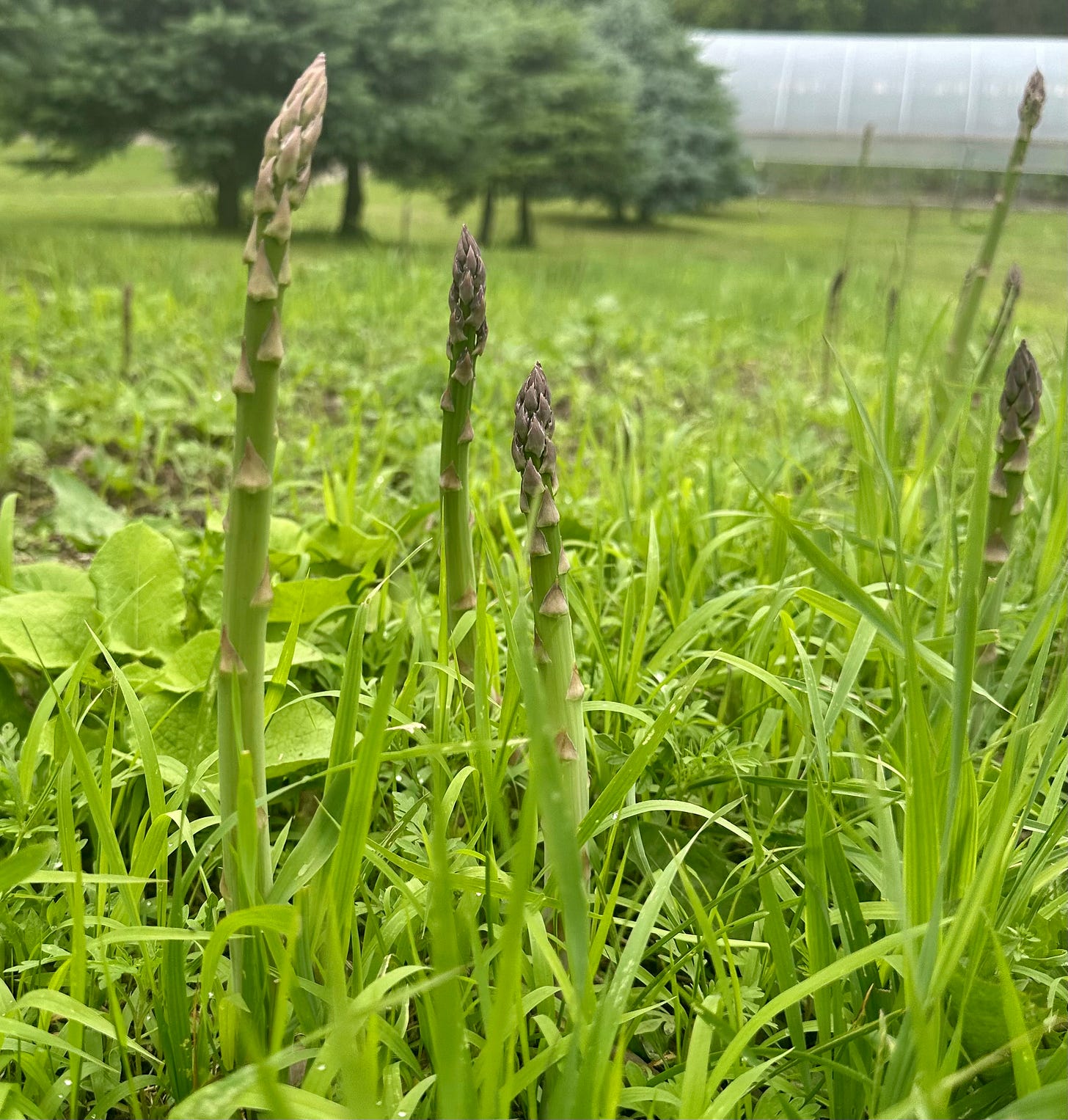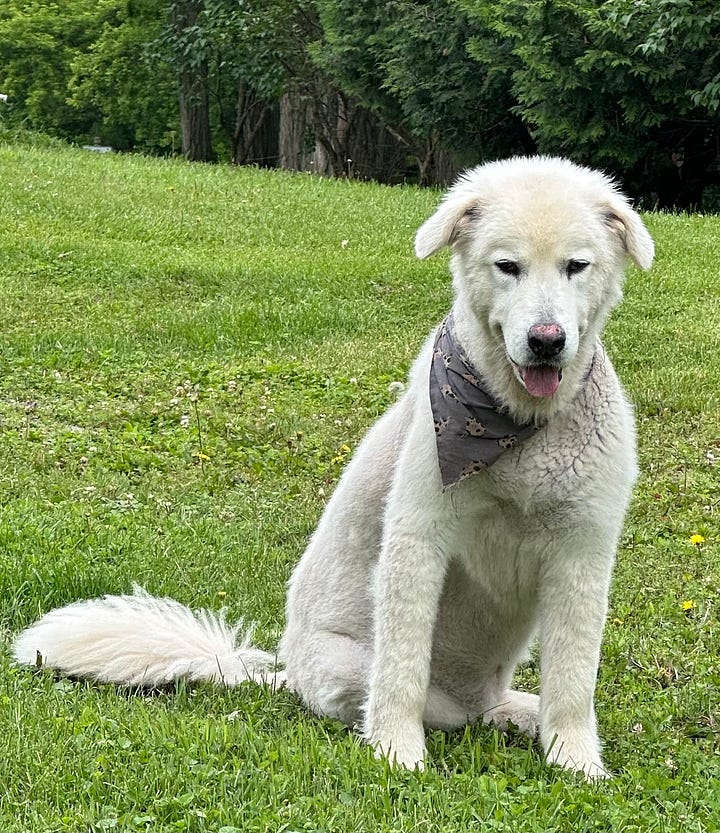

Fred and Kammy walked me through the planted rows, pointing things out like proud parents.
It’s gritty and hands-on here. Even though they’ve shifted from running a high-production farm to mainly growing for themselves, it still takes attention, planning, focus, help, and plenty of on-your-knee work.
I want to show you around.
Summer’s arrival is plain to see.
Asparagus has been pushing up through the dirt for a few weeks now. Sugar snaps are ready, and 400 garlic plants—with their wild, looping scapes—stand near rows of chili peppers.
In the hoop house, lettuces, cukes, radishes, more peppers of many varieties—they love chili peppers— chard, eggplant, tomatoes, and kale are on their way.
And I’m probably forgetting something—it’s that kind of abundance.
And a look inside the hoop house:
Visiting the farm was a reminder of where our food begins.
I think it’s safe to say most of us aren’t canning tomatoes, dehydrating garlic for making garlic powder, drying tarragon, or growing much—if anything—of what we eat. We rely on farm stands and grocery stores and the farmers behind them. Being on the farm, standing there in the dirt— brought that into focus fast.
I like remembering that.
And just when I thought I’d seen it all, I remembered—oh right, the pigs—thirteen of them. Huge, snorting characters who Fred once raised for food but now seem more like beloved residents of the farm.
Initially, Fred and Kammy set out to be vegetable and pig farmers. Fred made bacon and sausage and butchered whatever cuts of pork you can imagine. These days, the pigs are mostly just part of the place—well-fed, well-cared-for, and not going anywhere. They add to the whole scene here: real, a little unruly, and full of life.
Now, the jewel of my visit: asparagus.
I get very excited about seeing asparagus growing—ridiculously excited. Picking it feels like a privilege—a quiet thrill and my idea of heaven.
When I see those spears shooting up from the earth, I want to give them a standing ovation. Truly. It’s singular and commanding and waited years to get here.
Asparagus takes time.
You plant it, and then you wait—two, maybe three years before you can harvest. Wait until year five, and the bed will reward you with longevity. It's a perennial, which means once it's in, it keeps coming back if you care for it.
Each plant produces approximately 16 spears per season in total. Not much. And the harvest window? Short. Eight weeks, if you're lucky. It also grows fast—sometimes six inches in a single day! No wonder it's pricey. But worth it. Every tender bite.
The funny thing is, the only asparagus I knew growing up came out of a Green Giant can—the slim silver one with the shiny label. And I loved it. I thought it was so fancy. I'd ask for it every year on my birthday, right alongside lamb chops and a Duncan Hines strawberry cake. My mom would make exactly what I requested.
I've come a long way from the canned stuff. And I'm grateful to know real asparagus now. And I think it deserves a little reverence. Whether it's tinned or just pulled from the soil, it's always felt like something special to me.
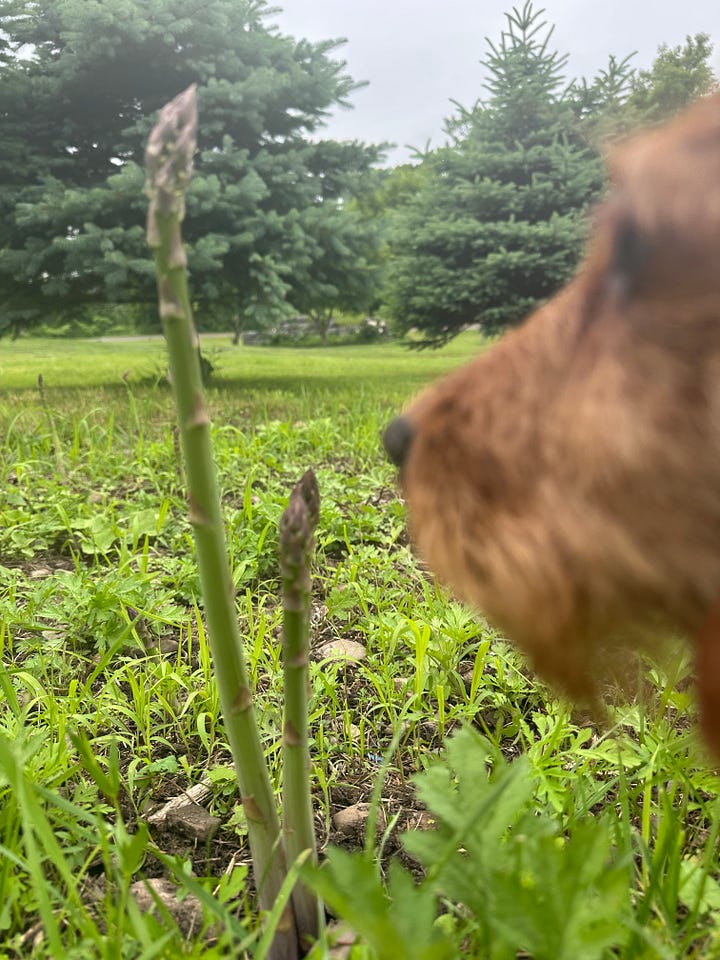
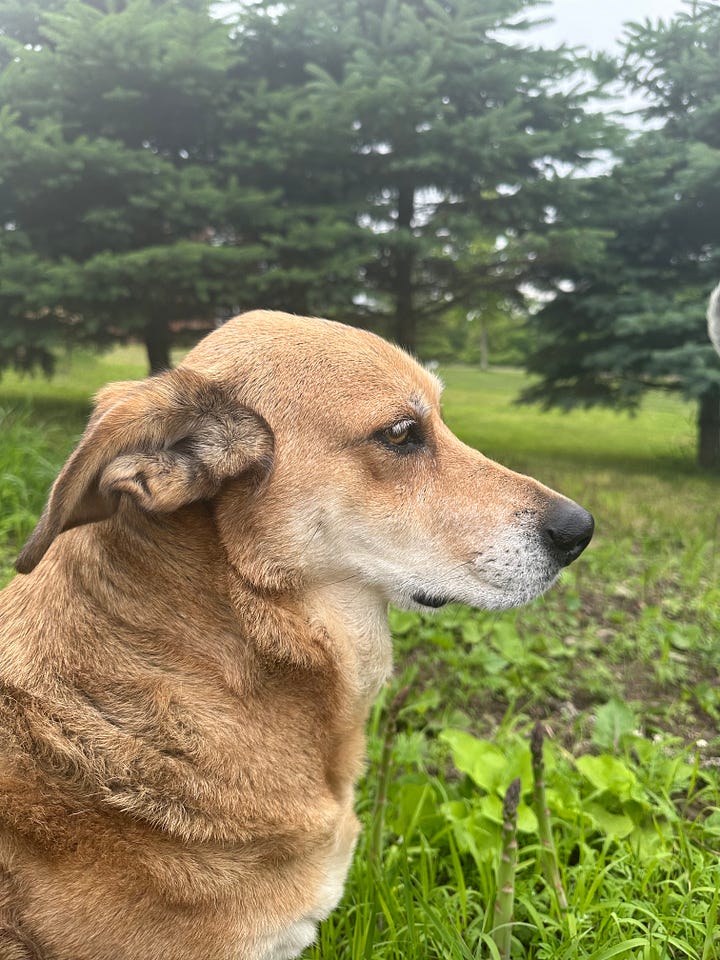
I rode away from Stubborn Girl Farm with a small bounty—an armful of rhubarb, bunches of asparagus, heads of lettuce, six jars of homemade tomato sauce, and a jar of their garlic powder and dried tarragon tucked into my bag.
Fred and Kammy have made a life here—one they've shaped with their own hands over time through trial, grit, invention, and a whole lot of persistence. I don't pretend to know exactly what it means to them, but from the outside, it appears to be a deliberate choice.
Next time, I'll show you what I made with that asparagus—entirely inspired by Kammy—perfect for a summer lunch or dinner.
And there's a new cookie of the month coming, too.
So Stay tuned.
And thanks for being here!




